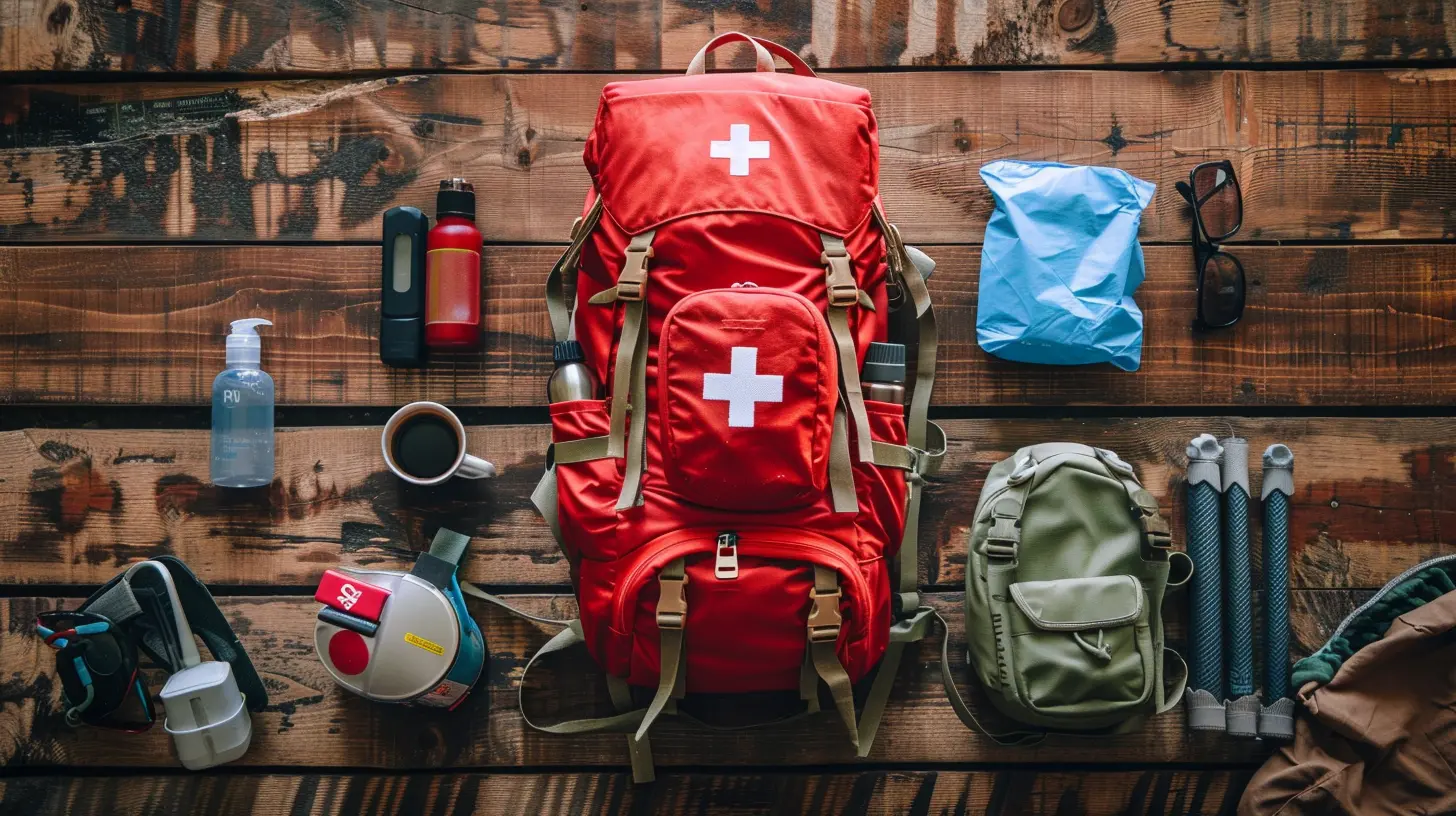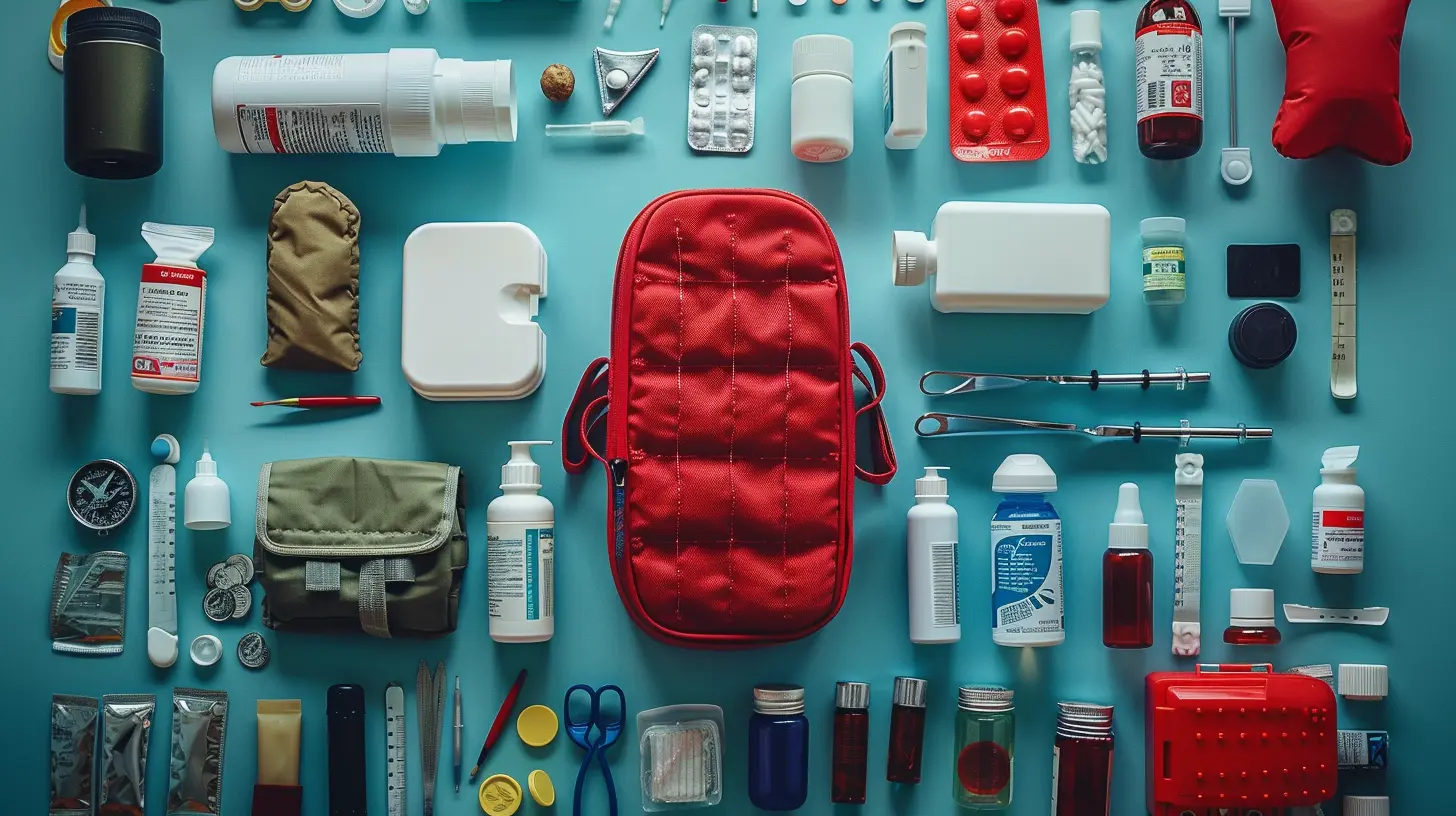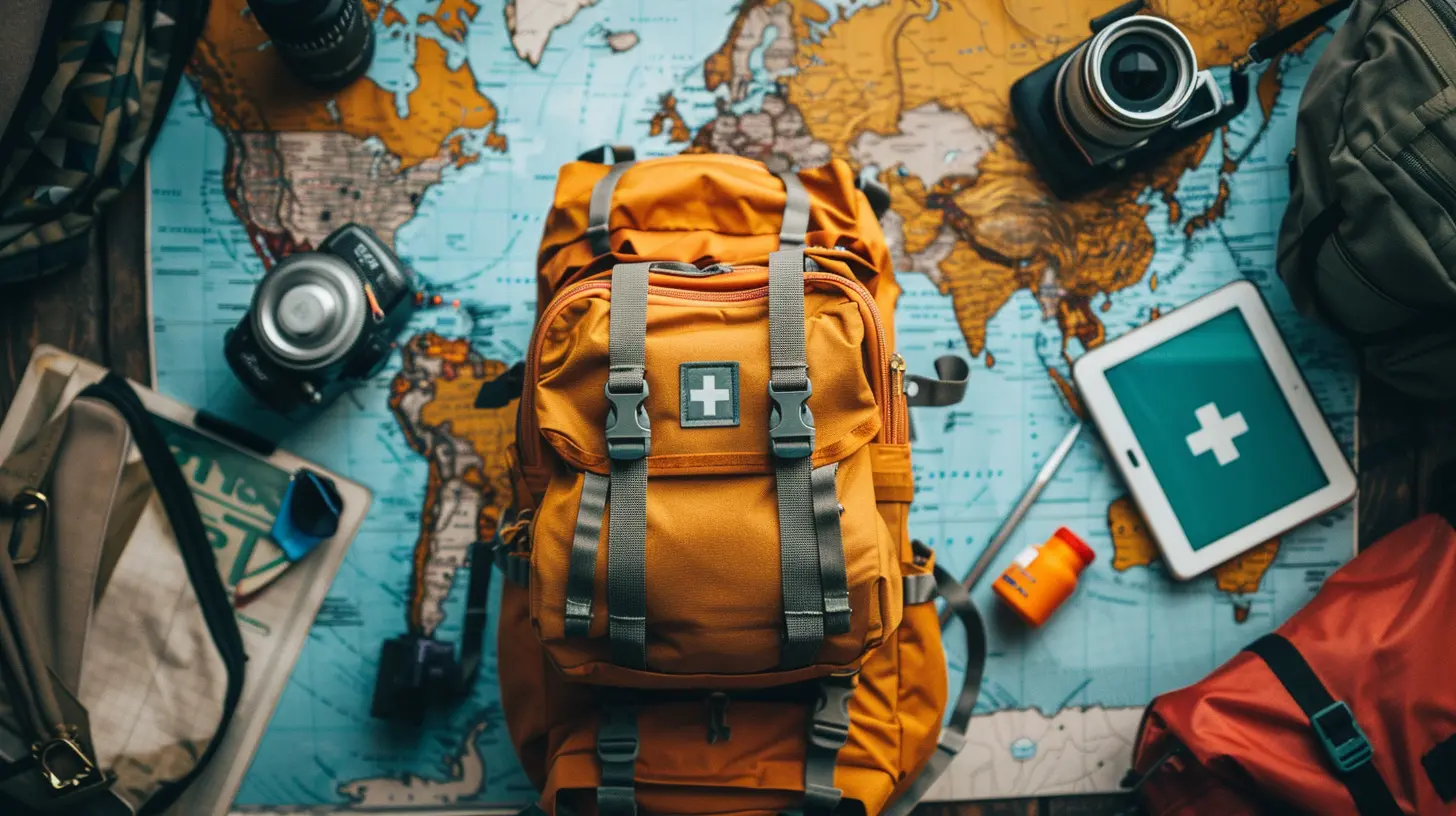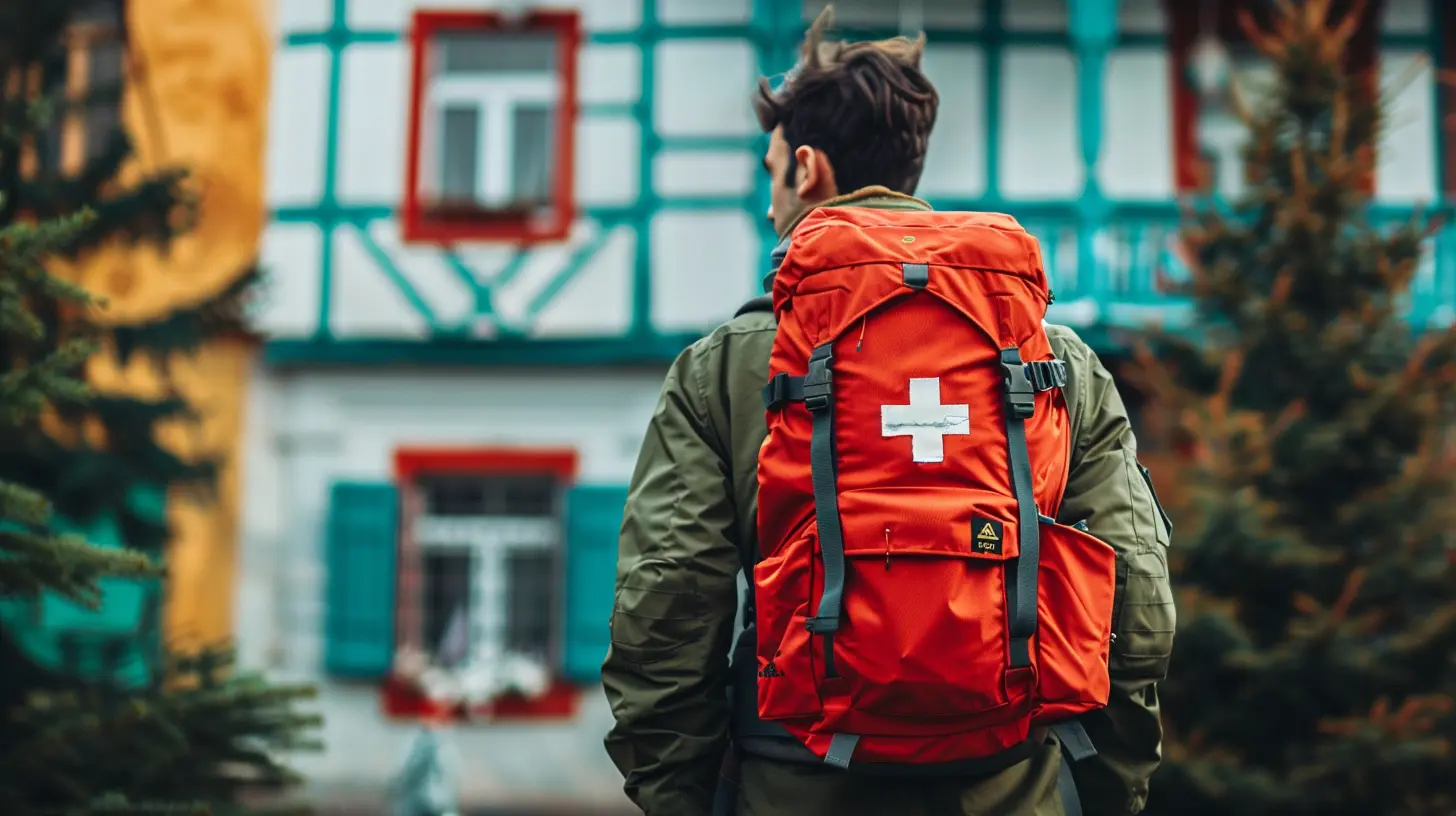Essential First Aid Kit Items for Every Traveler
27 August 2025
There’s an undeniable thrill to venturing into the unknown—whether it’s hiking through misty mountain trails, strolling down quaint cobblestone streets in Europe, or setting sail to a tropical paradise. But as exciting as travel can be, it also comes with its own set of unpredictable bumps and bruises. That’s why packing the right first aid kit isn’t just smart, it’s essential.
You don’t need to haul around a mobile pharmacy. With some thoughtful planning and a compact, lightweight kit, you're ready to handle minor scrapes, sudden headaches, or unexpected stomach upsets. Let’s walk through everything you really need—no fluff, just the practical stuff you’ll be thankful for when the unexpected happens.
Why Every Traveler Needs a First Aid Kit
Before we dig into the must-haves, let’s tackle the why. Why bother packing a first aid kit when there’s always a pharmacy nearby, right?Well… not always.
You could be miles from the nearest town, stuck in a delayed layover, or navigating a country where language makes it tricky to ask for the right meds. Plus, when you’re feeling queasy or injured, you won’t want to go hunting for supplies. Having your own stash means you’re self-reliant, safe, and ready.
The Perfect Travel First Aid Kit: A Blend of Basics and Personal Needs
There’s no one-size-fits-all when it comes to a travel first aid kit. Some travelers might need extra items for allergies or chronic issues, while others may prioritize wound care for adventure sports. But there’s a solid foundation that works for everyone.Let’s break it down.
1. Basic Wound Care Supplies
Traveling often means blisters from new shoes, scrapes from hikes, or small cuts from adventures gone slightly awry. Keep things clean and under control with these essentials:- Adhesive Bandages (Band-Aids) – Different sizes for minor cuts and blisters.
- Sterile Gauze Pads and Tape – For larger wounds or scrapes.
- Antiseptic Wipes – To clean wounds quickly without needing water.
- Antibiotic Ointment – Prevents infections from minor cuts and scrapes.
- Tweezers – For removing splinters or insect stingers.
- Small Scissors – Handy for cutting tape or gauze to size.
Think of this as your travel toolkit for “ouch” moments. A well-stocked wound care section can keep a small scrape from turning into a nasty problem.
2. Pain and Fever Relief
Long travel days and strange beds can leave your body aching. Add jet lag, sunburn, and cramps to the mix and you’ll be glad you packed these:- Ibuprofen or Acetaminophen – Great for headaches, muscle aches, fevers, or inflammation.
- Aspirin – Can double as an emergency heart attack remedy too, if you're at risk.
It’s amazing how just a couple of tablets can turn your day around when you're feeling off.
3. Digestive Aids (a.k.a. Tummy Trouble Tacklers)
New cuisines are one of the best parts of traveling—but they can also surprise your gut. Trust me, nothing ruins a day faster than an upset stomach.Here’s what you’ll want on hand:
- Antacids – For heartburn or indigestion.
- Antidiarrheal Medication (like Imodium) – To stop diarrhea in its tracks when you just can’t afford to be tied to the bathroom.
- Oral Rehydration Salts – Rehydrate quickly after vomiting or diarrhea.
- Laxatives – Let’s be honest: travel constipation is real.
Pro tip? Carry these meds before you think you’ll need them. You don’t want to be googling pharmacies between toilet runs.
4. Allergy Relief & Cold Remedies
Between unfamiliar pollens, dusty hotel rooms, and sudden weather shifts, allergies can strike unexpectedly. Then, there’s the common cold—one sneeze on a plane and boom, you’re sick for days.Stock up on:
- Antihistamines – Great for unexpected allergic reactions or hay fever.
- Decongestant Tablets or Nasal Spray – Clears up sinus issues quickly.
- Cough Drops or Lozenges – Soothe your throat after long flights or exposure to dry air.
You don’t need a whole pharmacy, just enough to keep you functioning until you can rest.
5. Skin SOS: Sun & Insect Protection
From sunburns to bug bites, your skin takes the hit when you’re out exploring. A few handy additions will keep you protected and itch-free:- Sunscreen (SPF 30 or higher) – Essential, even on cloudy days.
- Aloe Vera Gel or After-Sun Lotion – Soothes sunburns.
- Insect Repellent – Especially important in tropical or rural areas.
- Anti-Itch Cream (like hydrocortisone or calamine) – Calms bites, rashes, or allergic skin reactions.
Hot tip: pack these in your carry-on if you're heading straight from airport to the outdoors. You'll thank yourself later.
6. Personal Medications and Prescriptions
This one’s a no-brainer, but easy to overlook when you’re juggling passport checks and packing lists. Always bring:- Enough of your daily medication to last the trip (plus a few days extra) – Delays happen.
- Copies of your prescriptions – In case you need a refill abroad.
- A doctor’s note – For any controlled substances or injectable meds.
Keep them in your carry-on, not your checked bag. Lost luggage shouldn’t compromise your health.
7. Motion Sickness Helpers
Whether it’s rough seas, winding mountain roads, or small planes, motion sickness can hit fast and hard. Here’s your remedy stash:- Motion Sickness Tablets (like Dramamine) – A must for cruises or road trips.
- Ginger Tablets or Candies – Natural nausea remedy.
- Sea-Bands – Acupressure wristbands that help reduce acute nausea.
Even if you don’t usually get motion sick, it's worth packing a few just in case. Prevention is way better than powering through.
8. Emergency Items That Could Be Lifesavers
We hope you'll never need these—but if you do? You'll be incredibly relieved you packed them:- Thermometer – Digital and compact versions are best.
- Emergency Blanket (Mylar) – Lightweight and heat-retaining.
- CPR Mask – If you're trained in first aid, make sure you can help safely.
- Latex or Nitrile Gloves – For helping others or handling wounds hygienically.
- Safety Pins – Fix wardrobe issues or secure bandages.
Think of them as items you might forget until it’s too late. Better safe than sorry.
9. COVID-19 Specific Essentials
Yes, the world is getting back to normal, but COVID-19 hasn’t totally disappeared. Smart travelers go the extra mile with:- Hand Sanitizer (at least 60% alcohol) – For when soap and water aren’t around.
- Face Masks – Still required in some places.
- Self-Test Kits – Helpful if you get sick abroad.
- Proof of Vaccination (digital and printed) – Just in case.
Even if you never use them, having them on hand makes you a more responsible traveler.
10. Packaging It All Together
Now that you’ve got your items, the next question is: how do I carry this kit without it swallowing my suitcase?Here’s how to do it efficiently:
- Use a Compact, Waterproof Bag – Preferably with organized compartments.
- Label Everything – Especially medications. You won’t want to guess while you're queasy.
- Restock After Each Trip – Check expiration dates and replace used items.
- TSA-Approved Containers – If carrying liquids in your hand luggage.
Treat your first aid kit like your passport: don't leave home without it.
A Few Bonus Tips From Seasoned Travelers
- Split Your Kit – Keep a mini version in your daypack and the full one in your main luggage.- Teach Your Travel Buddies – Make sure someone else knows how to use the kit in case you can’t.
- Keep a Cheat Sheet – Include basic first aid steps, especially useful in stressful moments.
Travel is all about embracing the unknown, but that doesn't mean you shouldn't be prepared. Your future self will be thankful, promise.
Wrapping It Up
Let’s be real—no one likes to think about getting sick or injured on a trip. But packing a well-thought-out first aid kit is an act of self-care and smart planning. Whether you’re backpacking through Southeast Asia, exploring Europe’s hidden gems, or road-tripping through the USA, these essential items are the unsung heroes of every adventure.So the next time you're writing up your travel checklist, don’t forget this quiet yet mighty companion. You might not use it every time, but when you need it, it could turn a ruined day into just a small hiccup in your journey.
Safe travels, and may your first aid kit stay mostly untouched—but always ready.
all images in this post were generated using AI tools
Category:
Travel HealthAuthor:

Taylor McDowell
Discussion
rate this article
2 comments
Adria McQuaid
Great tips! I never thought about some of these items—definitely adding them to my packing list!
November 22, 2025 at 3:26 PM
Rune Mathews
Great insights! A well-prepared first aid kit can truly enhance travel safety. Thanks for sharing these essential items for every traveler!
August 29, 2025 at 4:34 AM

Taylor McDowell
Thank you! I'm glad you found the information helpful. Safe travels!


